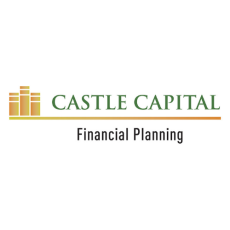Spending habits and managing uses of debt are a very important part of financial planning. This article provides some useful tips on how to manage debt on credit card spending.
On the last Friday of the month, CCPC.IE answer one of the most frequently asked questions (FAQs) from consumers who contact them with their queries. Most recently, CCPC have had a look at managing credit card debt. How you manage your credit card has a significant impact on your overall financial wellbeing. With high interest rates and penalty charges if you miss payments, credit card debt can quickly add up. However, there are a number of steps you can take to help get you back on track to being debt-free.
Step 1: Don’t hide from your finances
The first and most important step is to face up to your credit card bill as soon as it arrives. If you’re worried about accumulating debt you may not be able to repay, if possible, stop using your credit card completely and fight the temptation to use it for day-to-day expenses by leaving your card at home.
Step 2: Plan your repayments
It is important that you pay as much as you can afford off your bill every month. By paying more than the minimum payment (by even a small amount) you will reduce the time it takes you to be debt free and save you money in interest.
For example: If you have credit card debt of €1,000 and the interest – known as APR – on your card is 17%, it will take you two years to clear your debt if you pay off €50 a month and you stop using the card completely. However, if you increase your repayments to €100 per month, you could clear your balance in 11 months. So, the debt is paid off 13 months earlier and you save in interest repayments.
Check out their credit card calculator, which will show you how long it will take you to clear your credit card debt. It will also show you if there is an alternative credit card with a cheaper interest rate that you could switch to, to save even more money.
Step 3: Check to see if there is a better rate available
Interest rates for credit cards currently range from 13.8% to 26.6%*, so it could pay to switch. Some financial providers offer 0% interest on transferred balances for a limited introductory period. So, if you move your balance, every cent you pay will reduce your debt, as you won’t be paying any interest on your balance during that period.
*as of April 2022.
Step 4: Consider a personal loan
Although you may feel reluctant to take on more debt, it can make better financial sense to take out a personal loan to pay off your credit card debt. Interest rates on personal loans are generally lower than on credit cards. However, make sure you stop spending on your credit card, or else you will be faced with both the loan and credit card repayments. Check out their personal loan comparison tool, to compare the costs of loans and to work out what your repayments would be.
Step 5: Manage how you use your credit card
It’s important to manage your credit card, to help keep debt to a minimum and ensure that your credit rating and ability to borrow is not affected. Here are a number of steps you can take to help you manage your credit card a little better:
- Try to keep your credit limit low and don’t view it as a spending target.
- Consider reducing the credit limit to an amount you can comfortably afford to repay every month, so you are not able to run up debt you can’t repay.
- Don’t use your card for cash withdrawals except in emergencies, as you will be charged a high rate of interest often from the day you take out the money, as well as a cash advance fee.
- Set up a monthly standing order or direct debit for the minimum monthly repayment, or more if you can afford it, to avoid late payments.
Credit: ccpc.ie
Thanks for reading. As always, if you have any questions about the information above or need advice in this area, you can contact our personal financial planner, Jonathan McDonnell on jonathan@castlecapital.ie
You can book a meeting, by clicking on this link: Book Now
Castle Capital Financial Planning

